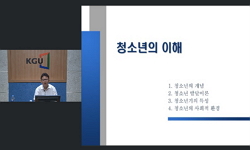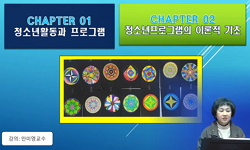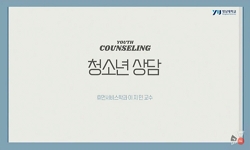The purpose of this study was to investigate characteristics of teenagers' perceptions to bullies according to the classification types of Q-methodology. The results of the analysis were classified in 5 types. Type 1, which was the type geared foward ...
http://chineseinput.net/에서 pinyin(병음)방식으로 중국어를 변환할 수 있습니다.
변환된 중국어를 복사하여 사용하시면 됩니다.
- 中文 을 입력하시려면 zhongwen을 입력하시고 space를누르시면됩니다.
- 北京 을 입력하시려면 beijing을 입력하시고 space를 누르시면 됩니다.




학교청소년이 지각하는 집단 따돌림에 관한 연구 -초, 중, 고등학생을 대상으로- = The Perception of Teenagers on the Bully - With the subject of primary, middle and high school students -
한글로보기https://www.riss.kr/link?id=A3027796
- 저자
- 발행기관
- 학술지명
- 권호사항
-
발행연도
2000
-
작성언어
-
-
주제어
집단 따돌림 ; 청소년 ; Bully ; Adolescence
-
KDC
500
-
등재정보
SSCI,SCIE,SCOPUS,KCI등재
-
자료형태
학술저널
- 발행기관 URL
-
수록면
137-147(11쪽)
- 제공처
- 소장기관
-
0
상세조회 -
0
다운로드
부가정보
다국어 초록 (Multilingual Abstract)
The results of the analysis were classified in 5 types.
Type 1, which was the type geared foward solution, showed that they expressed a strong attitude of sympathy and protection towards the victim. However, they had harbored rage and hostile feelings against the assaulter. For example, when they witnessed the bully in action, they positively intervened in the situation.
Type 2, which was the observer type, showed that they thought the victims were to blame for their misfortune. Also, when a friend who was left out in the cold by his classmates, they were just watched without showing any special interest.
Type 3, which was the type of conflict, indicated that they believed that the both the victim and the assaulter should have responsibility. In contrast to the previous type, they had sympathy for the friend who was left out in the cold by his classmates, they had the dual feeling that intended to use the bully under the situation with his friend.
Type 4, which was the type of assenting, indicated that they assumed an indifferent attitude to the situation, while they implied assenting to the situation of the friend who had a bad relationship with them.
Type 5, which was the negative type, showed that they had the negative view to the situation of bully itself so that they did not recognize the bully as the method of revenge for whatever reason.
The results of the study showed that the bully increased the factor of stress to school life of the victim or assaulter, even in the subjective position. The perception of the bully should change according to the characteristics of the types of people and it is necessary to study how to cope with the situations.
The purpose of this study was to investigate characteristics of teenagers' perceptions to bullies according to the classification types of Q-methodology.
The results of the analysis were classified in 5 types.
Type 1, which was the type geared foward solution, showed that they expressed a strong attitude of sympathy and protection towards the victim. However, they had harbored rage and hostile feelings against the assaulter. For example, when they witnessed the bully in action, they positively intervened in the situation.
Type 2, which was the observer type, showed that they thought the victims were to blame for their misfortune. Also, when a friend who was left out in the cold by his classmates, they were just watched without showing any special interest.
Type 3, which was the type of conflict, indicated that they believed that the both the victim and the assaulter should have responsibility. In contrast to the previous type, they had sympathy for the friend who was left out in the cold by his classmates, they had the dual feeling that intended to use the bully under the situation with his friend.
Type 4, which was the type of assenting, indicated that they assumed an indifferent attitude to the situation, while they implied assenting to the situation of the friend who had a bad relationship with them.
Type 5, which was the negative type, showed that they had the negative view to the situation of bully itself so that they did not recognize the bully as the method of revenge for whatever reason.
The results of the study showed that the bully increased the factor of stress to school life of the victim or assaulter, even in the subjective position. The perception of the bully should change according to the characteristics of the types of people and it is necessary to study how to cope with the situations.
동일학술지(권/호) 다른 논문
-
- 한국간호과학회
- 최경숙 ( Kyungsook Choi )
- 2000
- SSCI,SCIE,SCOPUS,KCI등재
-
한국인의 건강과 관련된 돌봄 - 강원도 위촌리 지역민을 중심으로 한 문화기술지 -
- 한국간호과학회
- 황혜연 ( Hwang Hye-yeon )
- 2000
- SSCI,SCIE,SCOPUS,KCI등재
-
- 한국간호과학회
- 이춘옥 ( Li Chun Yu )
- 2000
- SSCI,SCIE,SCOPUS,KCI등재
-
- 한국간호과학회
- 유명숙 ( Yoo Myung Sook )
- 2000
- SSCI,SCIE,SCOPUS,KCI등재




 KISS
KISS







